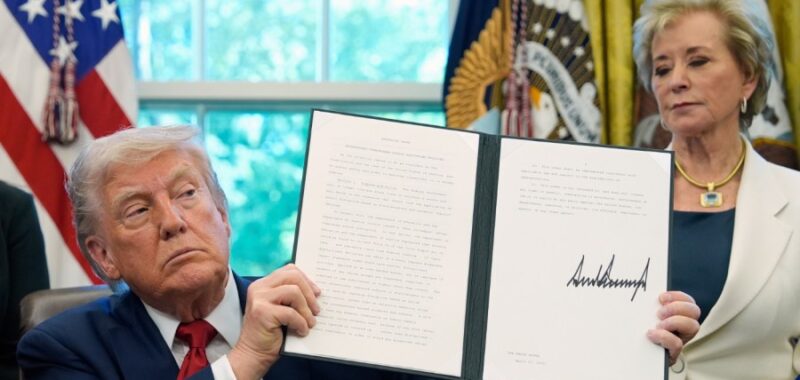
The Trump administration is fighting against diversity, equity and inclusion and for a return to extreme racial exclusion, inequality and segregation.
This was evident from the first few weeks of his presidency, when President Trump adopted a series of executive orders and guidance seeking to end affirmative action, eliminate efforts to address discriminatory hiring practices in the federal government, and to no longer prohibit segregation for government contractors.
We have also seen orders to abolish programs that ensure equity and address racial disparities in such areas as health care, and to ban books and other materials that honestly discuss race in American history from K-12 education, higher education, the military, and even national archives held at the Smithsonian.
One recent effort by the Trump administration designed to exacerbate racial inequality and exclusion in American schools that should not be overlooked is last month’s executive order that claims to remove equity from school discipline. By its own terms, the order seeks to undo policies from former Presidents Barack Obama and Joe Biden that reminded schools of their duty under Title VI of the Civil Rights Act, to ensure that discipline policies and practices do not exclude students based on race or result in disparate punishment of students of color.
Nationally, Black students experience suspensions and expulsions at approximately two to three times the rate of white students, limiting their access to in-class instruction and learning. Critically, pervasive school discipline disparities are not explicable by actual differences in the conduct of students of different races or differences in socioeconomic status. There is consensus in education research that Black students are no more likely to misbehave than other students. In fact, racial disparities are most pronounced for minor, subjective offenses where educators have discretion to determine whether behavior constitutes a punishable offense.
Schools did not always use suspension and expulsion to discipline students. Prior to the 1960s school suspension was rarely, if ever, used in schools. In contrast, during the first years of school desegregation, the number of Black students who were suspended and expelled jumped significantly.
For example, Minnijean Brown-Trickey, one of the Black students who desegregated Little Rock Central High School in 1957, was later expelled for pushing back against the racial harassment she experienced. As she was expelled, white students chanted “One down, eight to go,” referring to a desire to exclude the other Black students who comprised the Little Rock Nine.
National civil rights organizations convened in 1972 to discuss the sudden systematic exclusion of Black children in desegregating schools. A report released that year, titled “The Student Pushout: Victim of Continued Resistance to Desegregation,” found that large numbers of non-white students had been pushed to drop out of many recently desegregated school systems. According to the report, by suspending and expelling Black students at higher rates, school administrators were subverting court orders to desegregate. In some desegregating school districts, upwards of one-third or one-half of Black students were suspended from their new schools.
An examination of some of the “offenses” for which Black students were suspended shows how hostile treatment of Black students in desegregated environments motivated exclusionary discipline. For example, Black male students were suspended for talking to white female students. Black female students were suspended for not saying “yes sir” and “yes ma’am” when speaking to white adults. A coalition of civil rights advocates pushed the Department of Education to recognize the civil rights violations and exclusion occurring through racially disparate school discipline. This advocacy would eventually lead to the Title VI disparate impact regulations that Trump now seeks to eliminate.
Reflecting on the history of suspensions and expulsions, and the reasons Black students are punished more harshly, is critical to creating change today. This history is necessary to understand persistent biases.
Research shows that adults in schools are more likely to interpret the behavior of Black students as disrespectful, aggressive, threatening and dangerous compared to white students engaged in the same behavior. Deep-seated racial stereotypes lead to adultification bias, or the perception of Black children as older, less innocent and less worthy of nurturing and support. Educators and policymakers must address adult biases and eliminate subjective and discriminatory discipline policies.
Change is possible. In October 2023, California passed Bill 274, which prohibits schools from issuing suspensions for discipline categories, including “willful defiance,” tardiness and truancy, that have been shown to disparately exclude Black students for offenses that pose no danger to others. As California legislators recognized, suspensions and expulsions serve no educational purpose and unfairly exclude Black and other marginalized students.
Exclusionary punishment is not an effective deterrent for student misbehavior and negatively impacts learning and life outcomes for students. It’s time for lawmakers across the country to act to ban unfair and discriminatory school discipline practices and adopt research-based strategies to improve school climates.
Cara McClellan is director of the Advocacy for Racial and Civil Justice Clinic and practice associate professor of law at the University of Pennsylvania Carey Law School.

